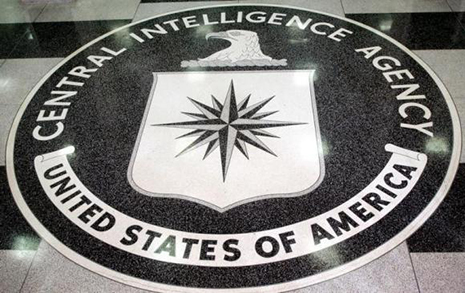Rectal rehydration and broken limbs: the CIA torture report`s grisliest findings

The full horror of the CIA interrogation and detention programmes launched in the wake of the September 11 terror attack was laid bare in the long-awaited Senate report released on Tuesday.
While parts of the programme had been known – and much more will never be revealed – the catalogue of abuse is nightmarish and reads like something invented by the Marquis de Sade or Hieronymous Bosch.
Detainees were forced to stand on broken limbs for hours, kept in complete darkness, deprived of sleep for up to 180 hours, sometimes standing, sometimes with their arms shackled above their heads.
Prisoners were subjected to “rectal feeding” without medical necessity. Rectal exams were conducted with “excessive force”. The report highlights one prisoner later diagnosed with anal fissures, chronic hemorrhoids and “symptomatic rectal prolapse”.
The report mentions mock executions, Russian roulette. US agents threatened to slit the throat of a detainee’s mother, sexually abuse another and threatened prisoners’ children. One prisoner died of hypothermia brought on in part by being forced to sit on a bare concrete floor without pants.
The dungeon
The CIA began the establishment of a specialised detention centre, codenamed DETENTION SITE COBALT, in April 2002. Although its location is not identified in the report it has been widely identified as being in Afghanistan. Conditions at the site were described in the report as poor “and were especially bleak early in the program”.
The CIA chief of interrogations described COBALT as “a dungeon”. There were 20 cells, with blacked-out windows. Detainees were “kept in complete darkness and constantly shackled in isolated cells with loud music and only a bucket to use for human waste”. It was cold, something the report says likely contributed to the death of a detainee.
Prisoners were walked around naked or were shackled with their hands above their heads for extended periods of time. About five CIA officers would engage in what is described as a “rough takedown”. A detainee would be shouted at, have his clothes cut off, be secured with tape, hooded and dragged up and down a long corridor while being slapped and punched.
A CIA photograph shows a waterboard at the site, surrounded by buckets and a bottle of an unknown pink solution and a watering can resting on the beams of the waterboard. The CIA failed to provide a detailed explanation of the items in the photograph.
Frozen to death
At COBALT, the CIA interrogated in 2002 Gul Rahman, described as a suspected Islamic extremist. He was subjected to “48 hours of sleep deprivation, auditory overload, total darkness, isolation, a cold shower and rough treatment”.
CIA headquarters suggested “enhanced measures” might be needed to get him to comply. A CIA officer at COBALT ordered Rahman be “shackled to the wall of his cell in a position that required the detainee to rest on the bare concrete floor”.
He was only wearing a sweatshirt as a CIA officer has ordered his clothes to be removed earlier after judging him to be uncooperative during an interrogation.
The next day, guards found Rahman dead. An internal CIA review and autopsy assessed he likely died from hypothermia – “in part from having been forced to sit on the bare concrete floor without pants”. An initial CIA review and cable sent to CIA headquarters after his death included a number of misstatements and omissions.
Shackled to the wall
The CIA in the first half of 2003 interrogated four detainees described as having “medical complications in their lower extremities”: two had a broken foot, one had a sprained ankle and one a prosthetic leg.
CIA officers shackled each of them in a standing position for sleep deprivation for extended periods until medical staff assessed they could no longer maintain that position.
“The two detainees that each had a broken foot were also subjected to walling, stress positions and cramped confinement, despite the note in their interrogation plans that these specific enhanced interrogation techniques were not requested because of the medical condition of the detainees,” the report says.
‘Rectal feeding’
CIA operatives subjected at least five detainees to what they called “rectal rehydration and feeding”.
One CIA cable released in the report reveals that detainee Majid Khan was administered by enema his “‘lunch tray’ consisting of hummus, pasta with sauce, nuts and raisins was ‘pureed and rectally infused’”. One CIA officer’s email was in the report quoted as saying “we used the largest Ewal [sic] tube we had”.
Rectal feeding is of limited application in actually keeping a person alive or administering nutrients, since the colon and rectum cannot absorb much besides salt, glucose and a few minerals and vitamins. The CIA administered rectal rehydration to Khalid Sheikh Mohammed “without a determination of medical need” and justified “rectal fluid resuscitation” of Abu Zubaydah because he “partially refus[ed] liquids”. Al-Nashiri was given an enema after a brief hunger strike.
Risks of rectal feeding and rehydration include damage to the rectum and colon, triggering bowels to empty, food rotting inside the recipient’s digestive tract, and an inflamed or prolapsed rectum from carless insertion of the feeding tube. The report found that CIA leadership was notified that rectal exams may have been conducted with “Excessive force”, and that one of the detainees, Mustafa al-Hawsawi, suffered from an anal fissure, chronic hemorrhoids and symptomatic rectal prolapse.
The CIA’s chief of interrogations characterized rectal rehydration as a method of “total control” over detainees, and an unnamed person said the procedure helped to “clear a person’s head”.















































